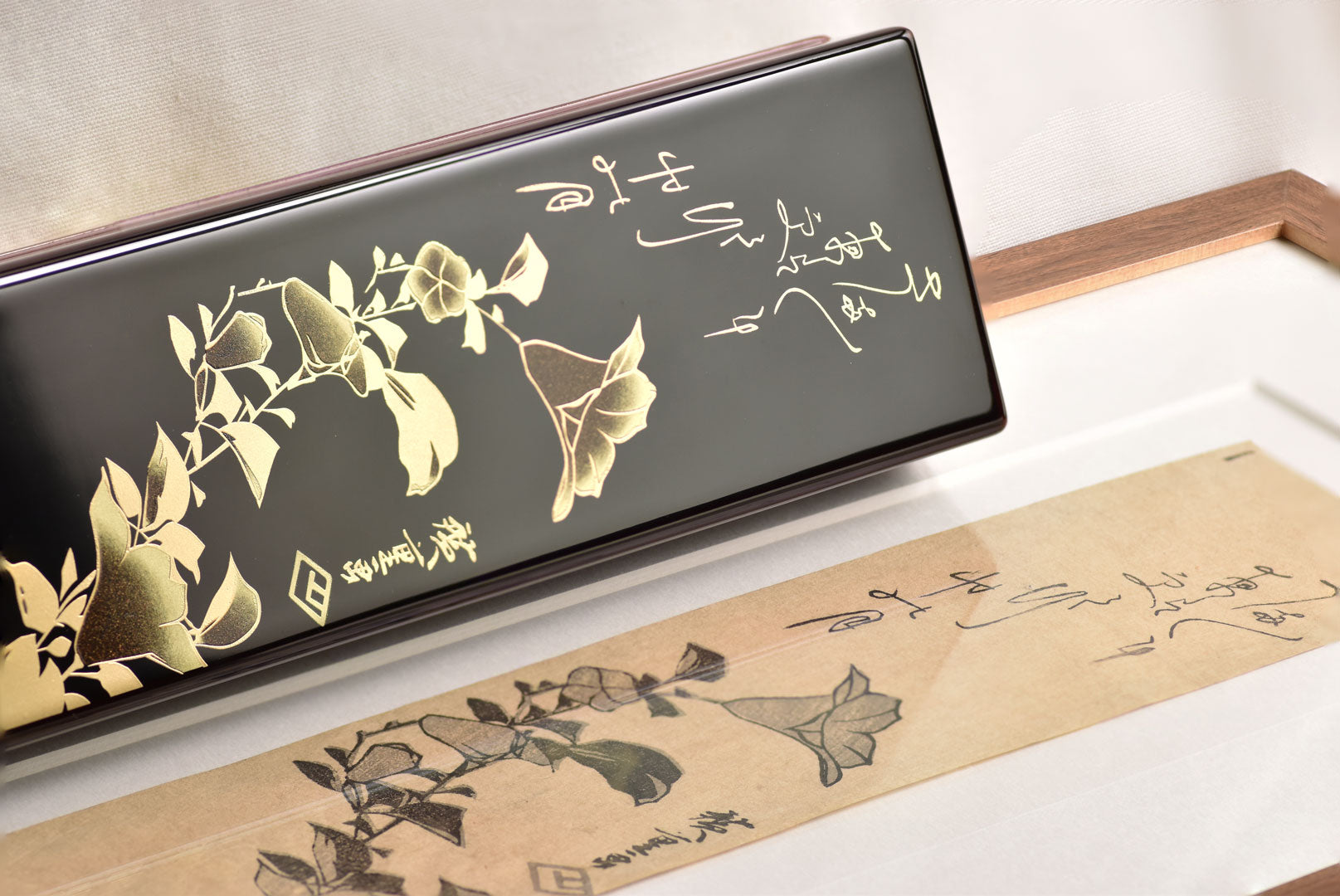'Japanese Bellflower'
(ca. 1840)

HIROSHIGE acquired a piece of Ukiyo-e artwork – ‘Japanese Bellflower’ – a woodblock-on-paper original by Hiroshige that he drew circa 1840, which still remains in exceptional gallery condition even after 180 years. It depicts Japanese bellflowers in full bloom, drawn with a purposeful and almost vector-like manner that looks avant-garde even by today’s modern design sensibilities. At the top is a handwritten poem by Hiroshige, loosely interpreted as ‘The moon indulges into the night in various ways.’ The artwork is signed by Hiroshige and carries his emblematic seal.
Dimensions: 265mm x 80mm x 35mm
Single watch box
Wood exterior with felt interior
Two-part box (lid & base)
Red akane-urushi base, with suki-urushi layers applied over it
Signed by hand - Hiroshige's original 'Japanese Bellflower' artwork
Handmade in Kanazawa Limited to 250 pieces
'Japanese Bellflower'
(ca. 1840)

Urushi, to many especially collectors, is seen as a miraculous substance. Urushi cures naturally through a process of oxidation and polymerization into a material with remarkable properties for a natural substance. As the urushi lacquer hardens, it absorbs moisture from the air. This makes the lacquered surface perpetually shiny and slick. It also makes it very durable and able to withstand erosion from water, acids, alkalies, alcohol, and changes in temperature, which is the main reason lacquer became an art form to begin with. Over time, urushi will actually become harder and more scratch resistant as the polymerization process continues on even after the initial manufacture.
HIROSHIGE acquired a piece of Ukiyo-e artwork – ‘Japanese Bellflower’ – a woodblock-on-paper original by Hiroshige that he drew circa 1840, which still remains in exceptional gallery condition even after 180 years. It depicts Japanese bellflowers in full bloom, drawn with a purposeful and almost vector-like manner that looks avant-garde even by today’s modern design sensibilities. At the top is a handwritten poem by Hiroshige, loosely interpreted as ‘The moon indulges into the night in various ways.’ The artwork is signed by Hiroshige and carries his emblematic seal.


Maki-e (蒔絵) - literally meaning sprinkled picture - is an art technique unique to Japan. It is a form of Japanese lacquer painting where the design is sprinkled with gold or silver powder and has, for the longest time, been held in high recognition and renowned for its exquisite beauty and artistry. The production of maki-e requires multiple processes, starting from lacquering, drawing, sprinkling and finally, polishing.